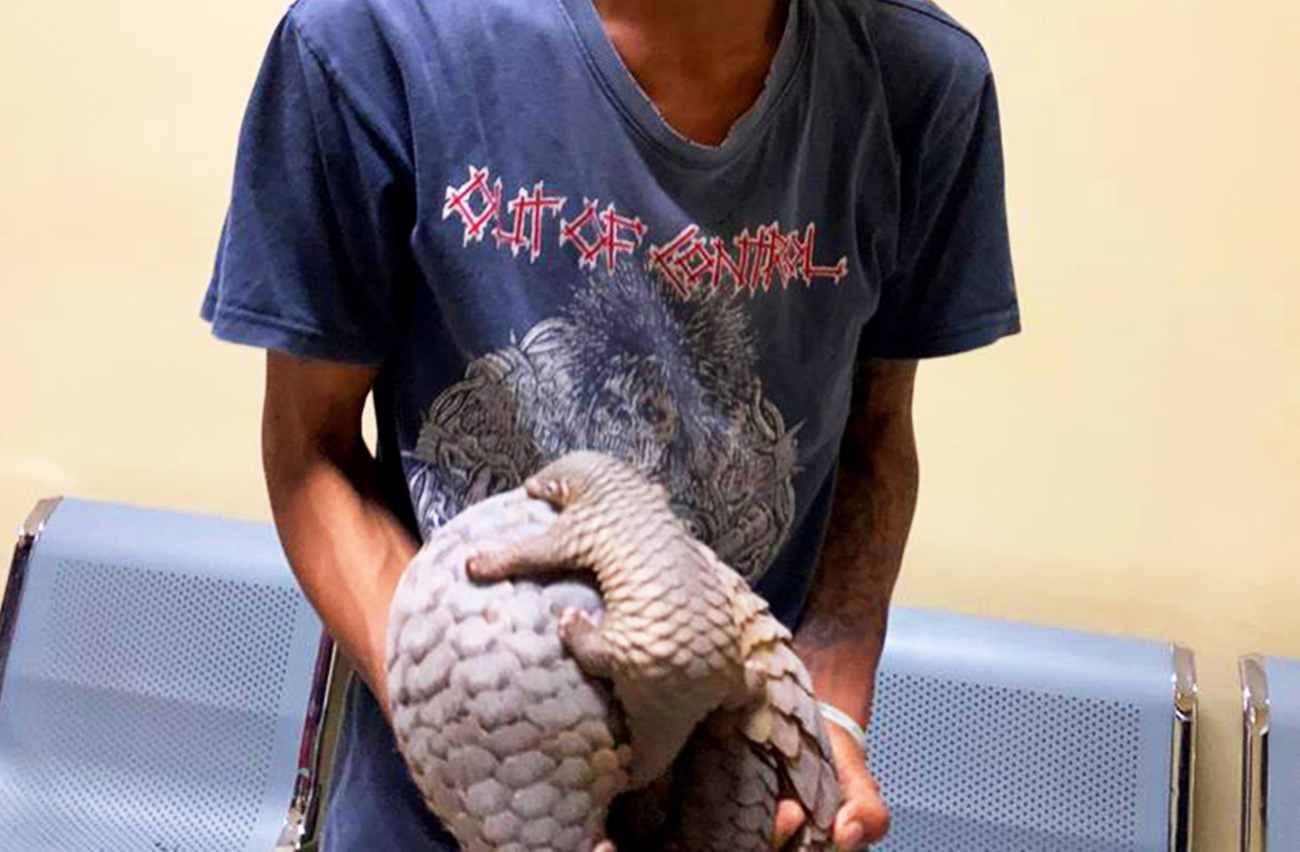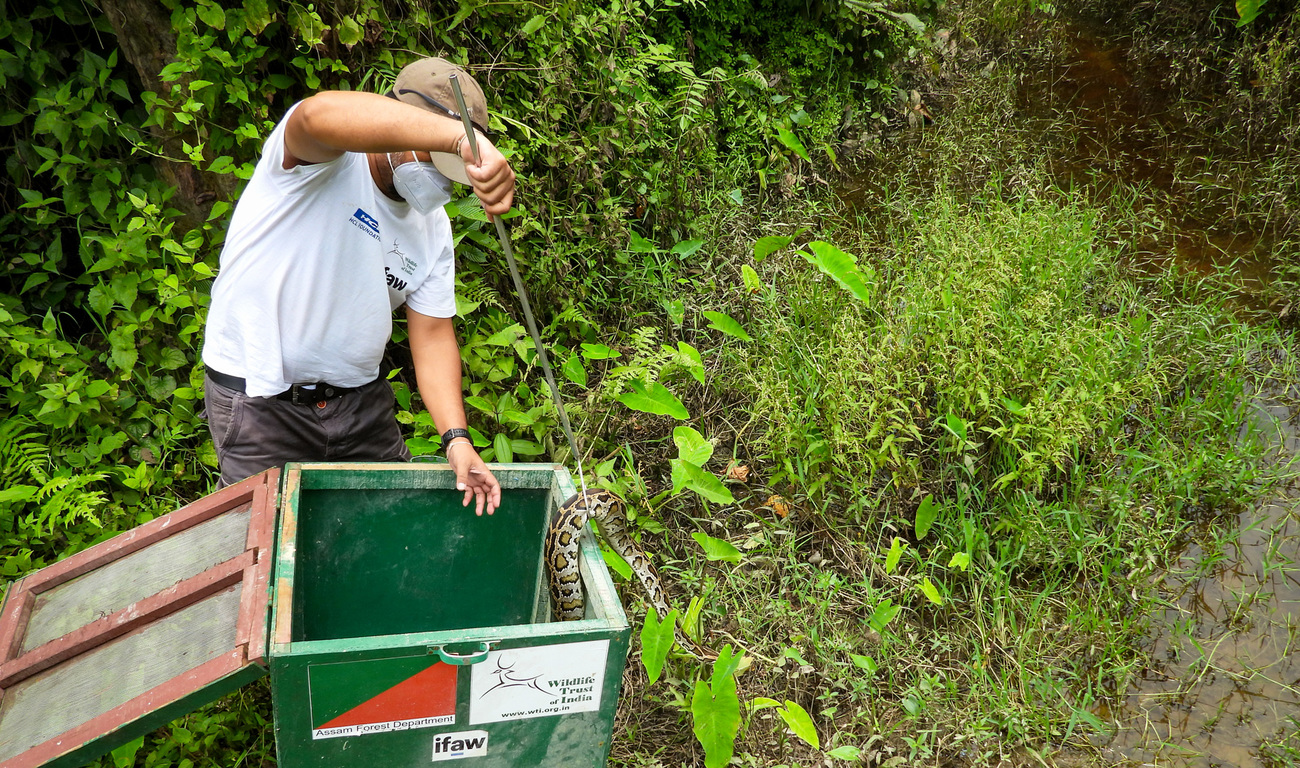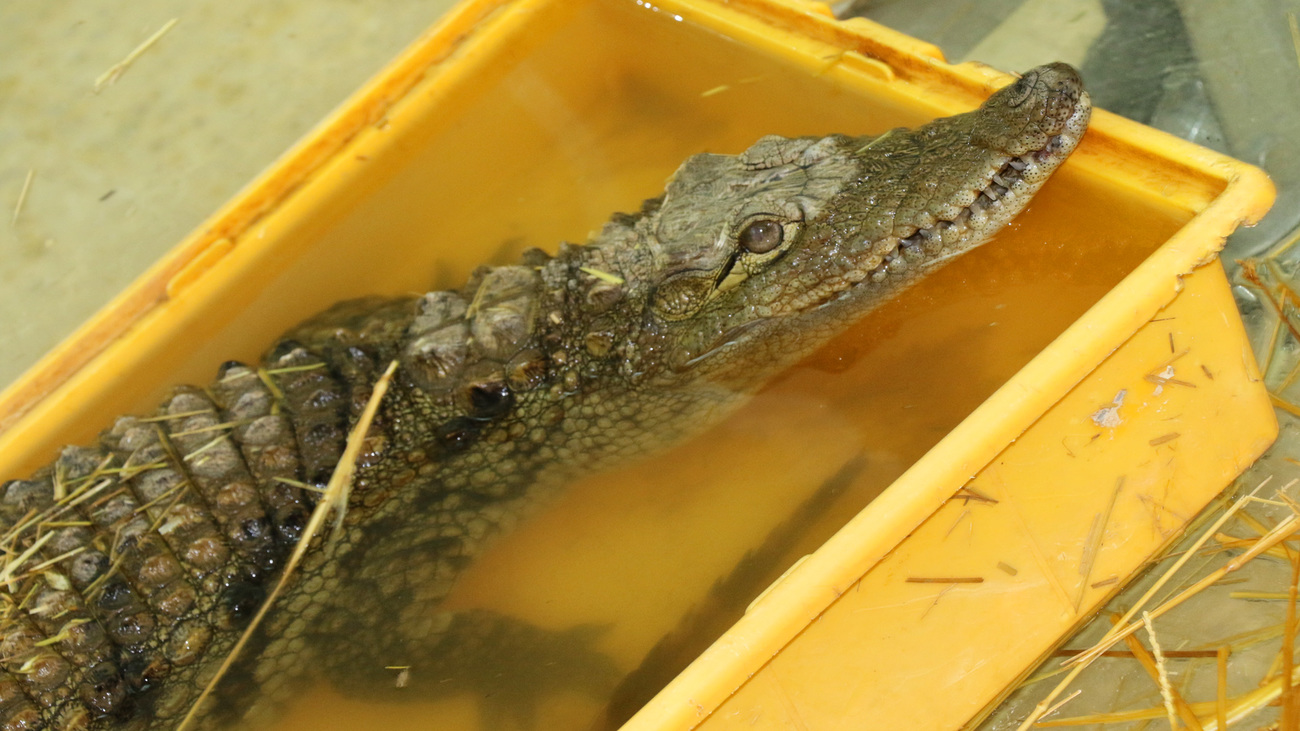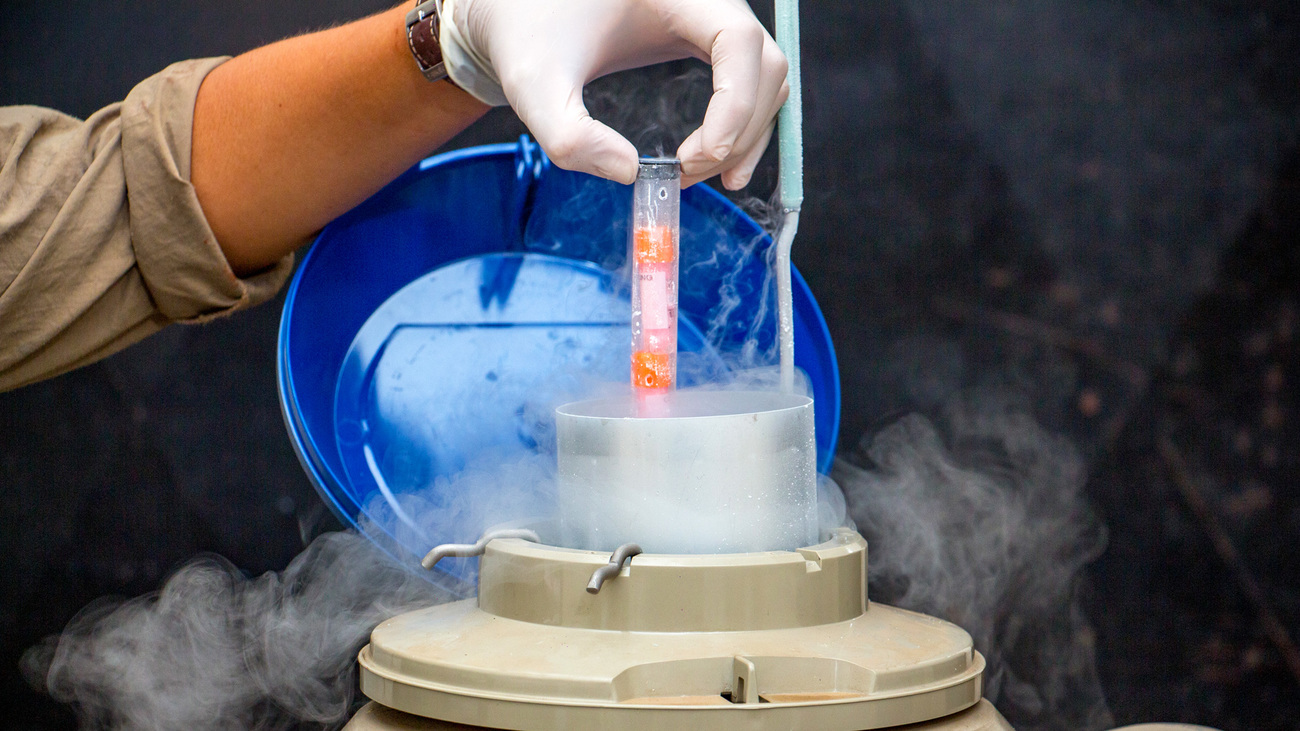CARE – Brazil, Guyana, Congo, and Uganda
Empowering frontline officers to rescue animals from wildlife traffickingConfiscator kits protect trafficked live animals and enforcement officers
Confiscator kits protect trafficked live animals and enforcement officers

For most trafficked live wildlife, frontline officers are their last hope for a chance at life back in the wild. Whether at airports, border lines, or marine hubs, cruel and illicit wildlife trade occurs at a shocking rate worldwide. In fact, wildlife trafficking is one of the world’s most common criminal activities, preceded only by drug, human, and weapons trafficking.
Now, with access to kits created by IFAW and our partners Jakarta Animal Aid Network and the Jane Goodall Institute, more than 200 frontline officers in trafficking hotspots in Guyana, Indonesia, and Congo are better prepared to safely and humanely handle the animals they rescue. These kits reduce the risk of injury and disease transfer for both people and animals, lessen animals’ stress levels, and improve their survival chances after being trafficked in inhumane conditions.
So, what exactly goes into a confiscator kit?

Snake hooks and honey
It is critical for frontline officers to safely and humanely handle any confiscated wild animal. At times, this could mean dealing with a slithery vertebrate who has sharp teeth full of dangerous venom or an agitated furry mammal with their claws out, ready to strike. No matter the species, each officer should have the proper handling and care equipment so neither the officer nor the animal gets injured.
For the safe handling and care of confiscated wildlife, protective equipment is essential. One important piece of equipment contained in each kit is a snake hook.
Imagine opening a suitcase and coming face-to-face with a stressed snake that must be quickly secured.
In this scenario, a snake hook is vitally important for the safety of enforcement officers as the snake’s species—and how dangerous it is—may not be immediately clear.
Thick, protective gloves are also included in this part of the kit and may be worn by those securing the transport/rescue crate.
Another versatile item in the confiscator kit is a light rope. Rope can be used to humanely restrain wild animals so they are less likely to injure themselves or an enforcement officer. For example, when enforcement officers rescue a trafficked crocodile, they must ensure the crocodile’s mouth is closed.
Other items included in this part of the kit are catching nets, a towel or blanket for bedding and additional warmth, honey for emergency animal nutrition, and a box of zip ties to secure crates.

Protection against zoonotic disease
Wild animals are prone to carry a number of dangerous pathogens that can be transmitted to humans, and likewise, humans can unintentionally carry and transmit harmful diseases to animals if the proper personal protective equipment (PPE) is not worn. Diseases transmitted between humans and animals are called zoonoses.
Each confiscator kit is stocked with multiple PPE items to reduce airborne and hand-borne transmission, as well as contamination from bodily fluids. One of these useful pieces of equipment is the face shield. The shield provides a broad, non-penetrable barrier between the enforcement officer and any external hazardous materials that might be flung, spit, or kicked into their face.
In the event an officer needs full-body protection, reusable body suits are also included.
Face masks, medical gloves, shoe covers, and a first aid kit are also included, so officers can protect themselves from exposure to harmful materials.
Forensic evidence collection
Rescuing the animals is the priority, but frontline officers also need to collect the evidence required to build a solid case against wildlife traffickers.
Sterile tubes and forensic rulers ensure key evidence is collected on the spot and maintains its integrity. It’s critical that the collected evidence is recorded accurately and properly so that legal proceedings can start.

Keeping clean
Our kits include hygienic cleaning solutions to ensure surfaces, cages, and equipment can be properly disinfected once a confiscated animal is removed and placed for further care. Each officer undergoing training with our team practices recommended biosafety cleaning protocols to minimize the chance of cross-contamination or infection.
For hygienic cleaning, we recommend dish detergents, disinfectant, rubber gloves, and a variety of cleaning brushes be available and used by enforcement officers confiscating wild animals.
Kits empower frontline officers
These kits are a cornerstone of our Confiscated Animals – Rescue & Enforcement Project (CARE), an IFAW-led grant funded by The US Department of State, Bureau of International Narcotics and Law Enforcement Affairs (INL) and implemented together with Jakarta Animal Aid Network, the Jane Goodall Institute, and Legal Atlas.
Our project helps develop the technical capacity of government agencies to handle and care for animals seized in trade and empowers frontline officers in Indonesia, Congo, and Guyana.
Each of these countries is significantly impacted by the illegal wildlife trade, and law enforcement officers frequently confiscate live animals.
Related content
Every problem has a solution, every solution needs support.
The problems we face are urgent, complicated, and resistant to change. Real solutions demand creativity, hard work and involvement from people like you.